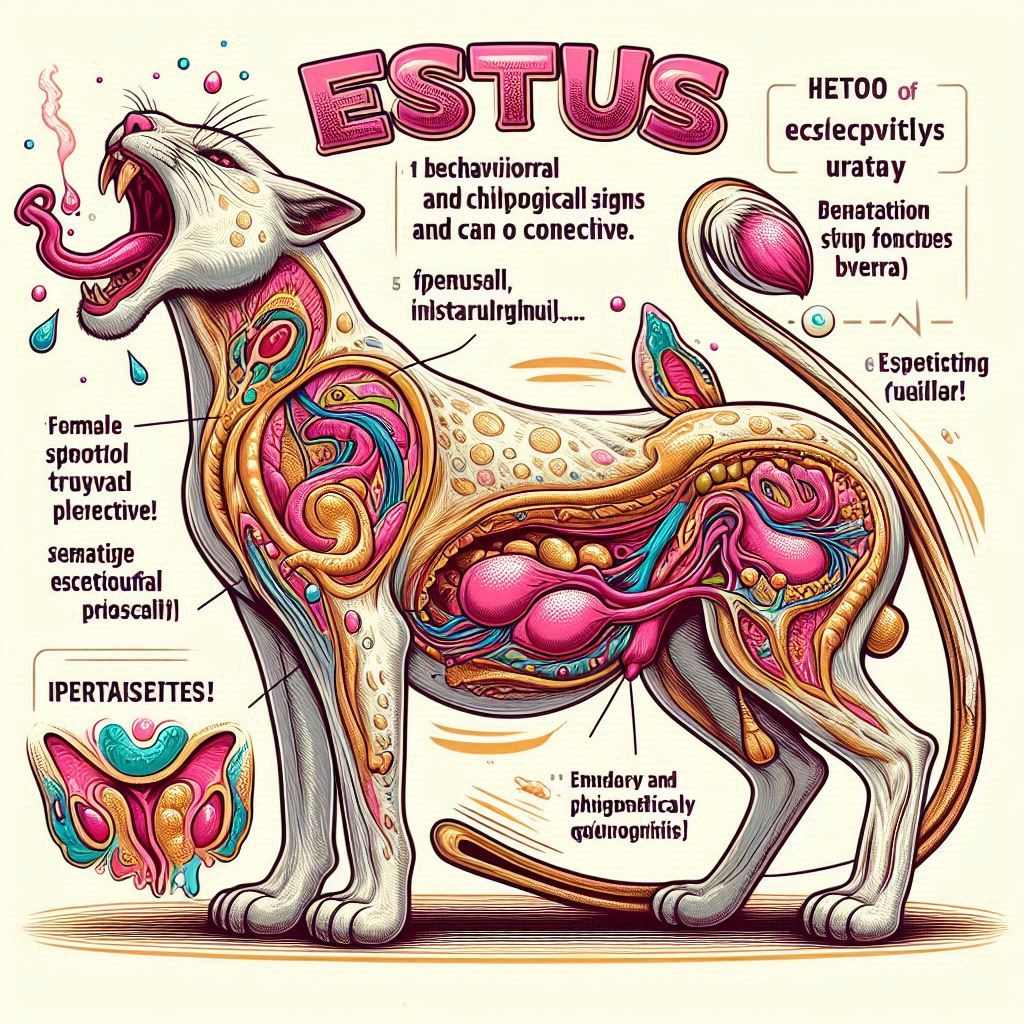
Estrus is the period of sexual receptivity and fertility in female mammals. During estrus females exhibit behavioral and physiological signs indicating they are ready to mate and can conceive 1.jpg
Definition: Estrus
Estrus is the period of sexual receptivity and fertility in female mammals. During estrus, females exhibit behavioral and physiological signs indicating they are ready to mate and can conceive.
In-Depth Analysis and Applications
Overview: Estrus, also known as “heat,” is a crucial phase in the reproductive cycle of female mammals. It is characterized by hormonal changes that prepare the body for potential fertilization and pregnancy. The duration and frequency of estrus vary among species, but common signs include increased activity, vocalization, and changes in behavior and physical appearance.
Fall off the barn roof and busted your keister? Life on the farm or ranch can be tough on the bum. Need a break? Laugh it off at FarmerCowboy.com, the #1 farm humor site. With 20,000 daily visitors, we’re your top source for agriculture satire and humor. Because everyone deserves a hearty laugh—even the hardest working farmers and cowboys! Join us and turn those long days into fun tales at FarmerCowboy.com.
Physiological Changes:
- Hormonal Fluctuations: Estrus is regulated by the interplay of hormones, including estrogen and progesterone. High estrogen levels trigger the signs of estrus, while progesterone prepares the uterus for potential pregnancy. In livestock, the estrous cycle typically includes four phases: proestrus, estrus, metestrus, and diestrus.
- Ovulation: Ovulation typically occurs during or shortly after estrus. The release of an egg from the ovary is essential for fertilization. In cattle, for instance, ovulation occurs about 10-14 hours after the end of estrus.
Behavioral Signs:
- Increased Activity: Females in estrus often exhibit restlessness and increased movement, seeking out males for mating.
- Vocalization: Many species, such as cows and cats, vocalize more frequently during estrus. This vocalization serves to attract males and signal fertility.
- Physical Changes: Swelling and reddening of the vulva, along with the discharge of clear mucus, are common physical signs. In some species, such as dogs, bleeding may occur.
Importance of Estrus in Breeding: Understanding and detecting estrus is crucial for effective breeding management. Accurate heat detection ensures timely mating or artificial insemination, maximizing the chances of successful conception. In dairy and beef cattle, missed estrus detection can lead to prolonged calving intervals and reduced milk production or growth rates.
Methods of Heat Detection: Step-by-Step Guide:
- Observation: Regularly observe females for behavioral and physical signs of estrus. This is particularly important in the early morning and late evening when activity levels may be higher.
- Heat Detection Aids: Utilize tools such as heat detection patches, tail paint, and activity monitors. These tools can provide visual or electronic indicators of estrus.
- Record Keeping: Maintain detailed records of estrus cycles to predict and identify patterns. Knowing the history of each animal’s cycle can improve detection accuracy.
- Technological Solutions: Implement advanced technologies like electronic activity monitors and pedometers, which can track changes in activity levels that indicate estrus.
Pro Tips:
- Consistent and frequent observation increases the likelihood of detecting estrus.
- Combine multiple heat detection methods for improved accuracy.
- Train farm staff to recognize signs of estrus and use detection aids effectively.
Applications in Livestock Production:
- Cattle: Heat detection is vital for timely artificial insemination and improving reproductive efficiency. Using synchronization protocols can help manage breeding schedules.
- Swine: Estrus detection aids in scheduling insemination for optimal litter size. Estrus in pigs typically lasts 2-3 days, with ovulation occurring towards the end.
- Horses: Accurate detection ensures successful breeding and foal production. Mares typically show strong behavioral signs of estrus, such as frequent urination and presenting to stallions.
Economic Impact: Effective estrus detection and management can significantly enhance reproductive success and productivity in livestock operations. This leads to increased profitability through higher conception rates, shorter calving intervals, and improved herd management. For example, in dairy farms, accurate estrus detection can increase the number of lactations per cow, boosting overall milk production.
Challenges and Considerations:
- Accuracy: Inaccurate heat detection can result in missed breeding opportunities or unsuccessful insemination, leading to economic losses.
- Labor-Intensive: Frequent observation and monitoring require time and effort, which can be resource-intensive.
- Individual Variability: Signs of estrus can vary widely among individual animals, complicating detection. Some cows, for instance, may exhibit silent heats, where behavioral signs are minimal or absent.
Environmental Considerations: Improved reproductive efficiency through effective estrus detection can reduce the environmental footprint of livestock operations by optimizing resource use and minimizing waste. Efficient breeding reduces the number of non-productive days, thus lowering feed and resource consumption.
Future Directions:
- Technological Advancements: Development of more sophisticated heat detection tools, such as wearable sensors and AI-driven monitoring systems, to enhance accuracy and reduce labor requirements.
- Genetic Selection: Breeding programs focused on selecting animals with more pronounced and easily detectable estrus signs. Genetic markers associated with estrus behavior can be identified and used in selection.
Industry Trends:
Helpful Content for Farmers: Step-by-Step Guide to Effective Heat Detection:
- Training and Education: Ensure that all farm staff are trained to recognize the signs of estrus and understand the importance of timely detection.
- Regular Monitoring: Schedule routine checks for estrus signs at least twice a day, focusing on early morning and late evening.
- Use of Detection Aids: Implement heat detection aids like tail chalk, heat mount detectors, and activity monitors. Combine these tools with visual observation for best results.
- Record Keeping: Maintain comprehensive records of each animal’s estrus cycles, insemination dates, and pregnancy outcomes. This data helps in predicting future estrus periods and improving breeding decisions.
- Technology Integration: Utilize advanced technologies such as electronic pedometers, heat detection collars, and farm management software. These tools can provide real-time data and alerts, reducing the reliance on manual observation.
- Synchronization Programs: Consider using estrus synchronization protocols to manage breeding schedules and enhance the efficiency of heat detection. Synchronization can help ensure that a group of females come into estrus at the same time, simplifying management.
Pro Tips for Improving Heat Detection:
- Environmental Management: Provide a comfortable environment with adequate space, nutrition, and minimal stress. Comfortable animals are more likely to exhibit clear signs of estrus.
- Nutrition: Ensure that animals receive a balanced diet that supports reproductive health. Nutritional deficiencies can impact estrus expression and fertility.
- Health Management: Regular veterinary check-ups and health management practices can prevent conditions that may affect estrus expression, such as metabolic disorders and infections.
- Social Dynamics: Understanding the social hierarchy within a herd can help in identifying estrus. Dominant animals may exhibit more pronounced signs, while subordinate animals might show subtle signs.
Case Studies and Success Stories:
- Dairy Farm in Wisconsin: A dairy farm implemented a comprehensive heat detection program using activity monitors and visual observation. The farm saw a 15% increase in conception rates and reduced calving intervals by 10 days, leading to higher milk production and profitability.
- Beef Cattle Operation in Texas: A beef cattle operation used estrus synchronization and AI to improve breeding efficiency. By synchronizing estrus and using high-quality sires, the operation achieved a 20% increase in weaning weights and improved overall herd genetics.
- Swine Farm in Iowa: A swine farm adopted electronic heat detection systems and regular staff training. The farm reported a significant reduction in missed estrus periods, leading to larger litter sizes and better reproductive performance.
Resources for Further Exploration:

Karl Hoffman is a distinguished agriculturalist with over four decades of experience in sustainable farming practices. He holds a Ph.D. in Agronomy from Cornell University and has made significant contributions as a professor at Iowa State University. Hoffman’s groundbreaking research on integrated pest management and soil health has revolutionized modern agriculture. As a respected farm journalist, his column “Field Notes with Karl Hoffman” and his blog “The Modern Farmer” provide insightful, practical advice to a global audience. Hoffman’s work with the USDA and the United Nations FAO has enhanced food security worldwide. His awards include the USDA’s Distinguished Service Award and the World Food Prize, reflecting his profound impact on agriculture and sustainability.






